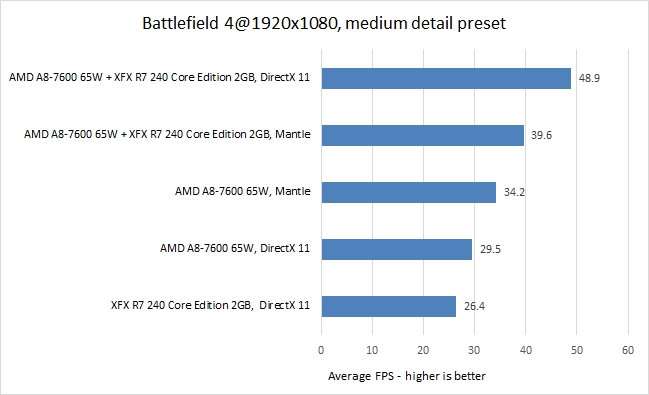Index
There are a few things to keep in mind when dealing with Dual Graphics. The only discrete cards supported by Kaveri APUs in Dual Graphics mode are the R7 240 and R7 250. The R7 250X is not supported and neither is the R5 230. AMD suggests DDR3 cards, which is good news as they tend to be somewhat cheaper than GDDR5 cards.
For the Crossfire test we paired the on-die R7 with the XFX R7 240 Core Editon graphics card. If you care, the exact designation of the discrete card we used in the test is the XFX Core Radeon R7 240 780MHz BOOST READY 2GB DDR3 LOW PROFILE PASSIVE HDMI DVI VGA, and the product code is R7-240A-CLH4.
The performance gains are substantial and as our results prove even the cheap Dual Graphics rig (R7 iGPU + R7 240) will make quite a few titles playable at 1080p. In essence, adding a $70/€50 card can make a big difference. To make it all work, you need to activate AMD Radeon Dual Graphics in the Catalyst Control Center.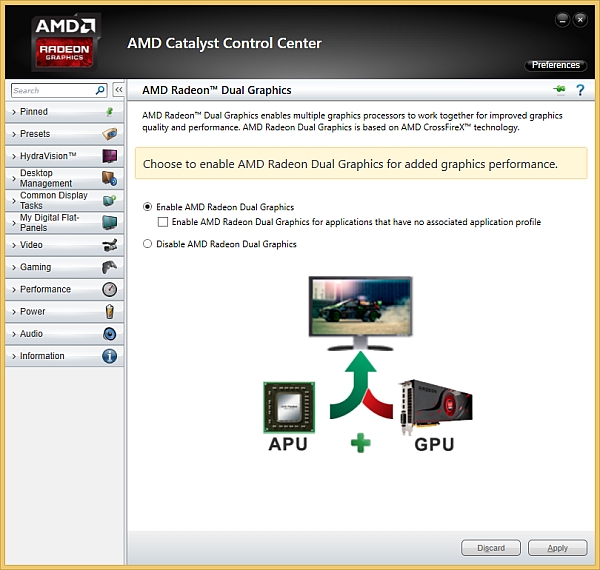
In case that Catalyst Control Center does not offer a Dual Graphics option, you will have to head into BIOS to activate this option. Bear in mind that this was the case with our Asrock FM2A88X-ITX+ motherboard, the method of activating Dual Graphics varies from board to board. For example, to make Dual Graphics work, we needed to explicitly instruct the system to use Dual Graphics. The Auto option was on by default, but Crossfire support was not available until we switched to the Dual Graphics/Surround View option. On some motherboards this option is called IGFX Multi-Monitor.
If these BIOS tweaks do not help, try setting the Primary Video Device/Primary Graphics Adapter to PCI Express, while at the same time enabling onboard graphics. It is not a lot of work, but novice users might not like having to deal with BIOS settings even if this is relatively basic stuff.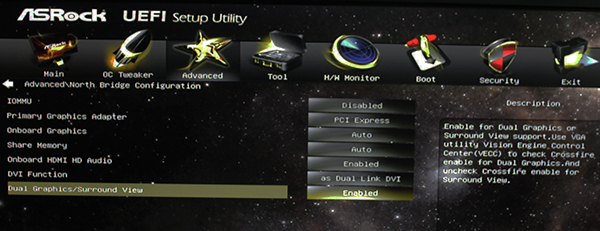
In OverDrive we can configure the GPU core clock and memory clock of the discrete graphics card, but not the on-die GPU core clock which is fixed.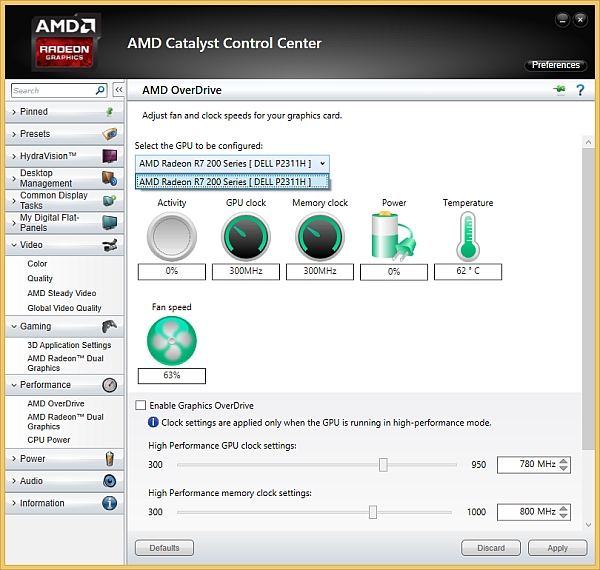
GPUz detected both GPUs. As you can see, we decided to carry out the tests with 1GB and 2GB of RAM allocated for the integrated GPU. We already proved that allocating more memory for the on-die R7 GPU does not make a difference and the same is true of Crossfire tests. We decided to try it out with 2GB because the discrete R7 240 features 2GB of memory.
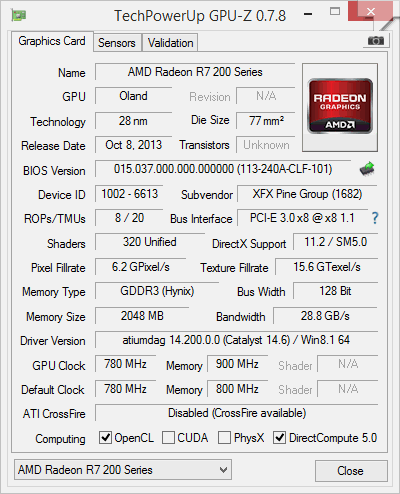
While testing the integrated R7 GPU, we used system memory clocked at 2133MHz. The use of fast DDR3 system memory allows the integrated GPU to shine through, as it benefits from more bandwidth (34.1GB/s vs. 28.8GB/s on the R7 240). Note that the difference in performance between the two GPUs also stems from the fact that the integrated R7 features 384 stream processors, while the discrete R7 240 (Oland Pro core) has 320 stream processors.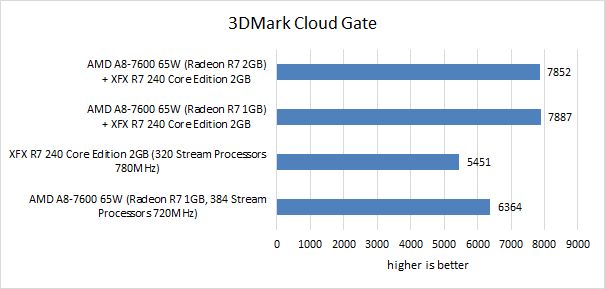
Crossfire with R7 240 delivers a 40% boost in 3DMark Fire Strike.
Tomb Raider also saw a substantial performance gain.
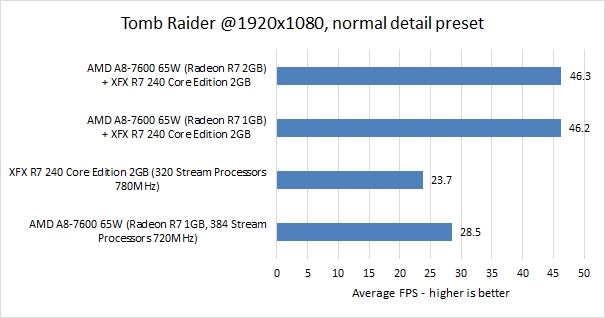
Hitman in Dual Graphics mode yields a 37% performance gain.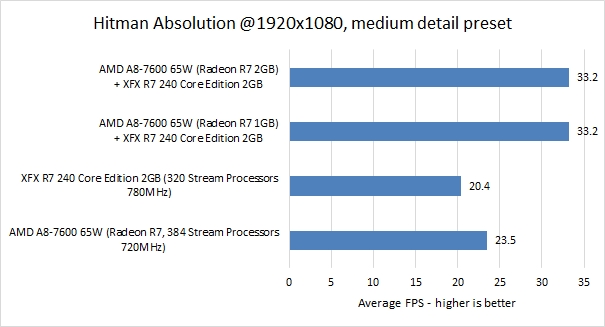
In Crysis we got a 48% performance gain with the R7 240 in tow.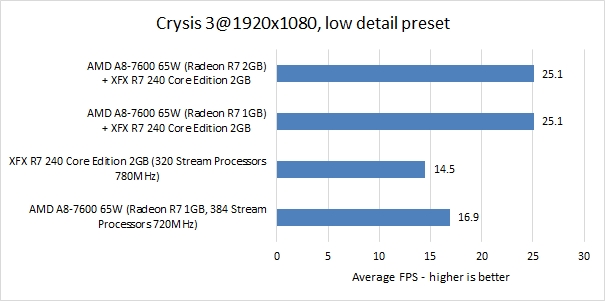
Bioshock fares even better, with a 66% gain.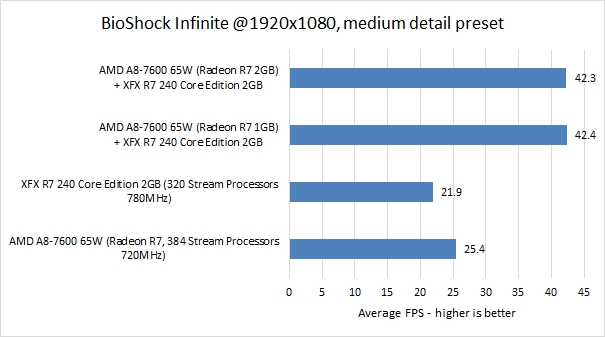
In Battlefield 4, on medium settings and 1080p, we got a great score, with a very playable 49fps. Mantle and Dual Graphics did not deliver a huge improvement, but performance was nonetheless impressive. Mantle boosted performance by about 15 percent. We expect AMD’s support for Mantle to improve with every software update, so this might not be the end of the story.